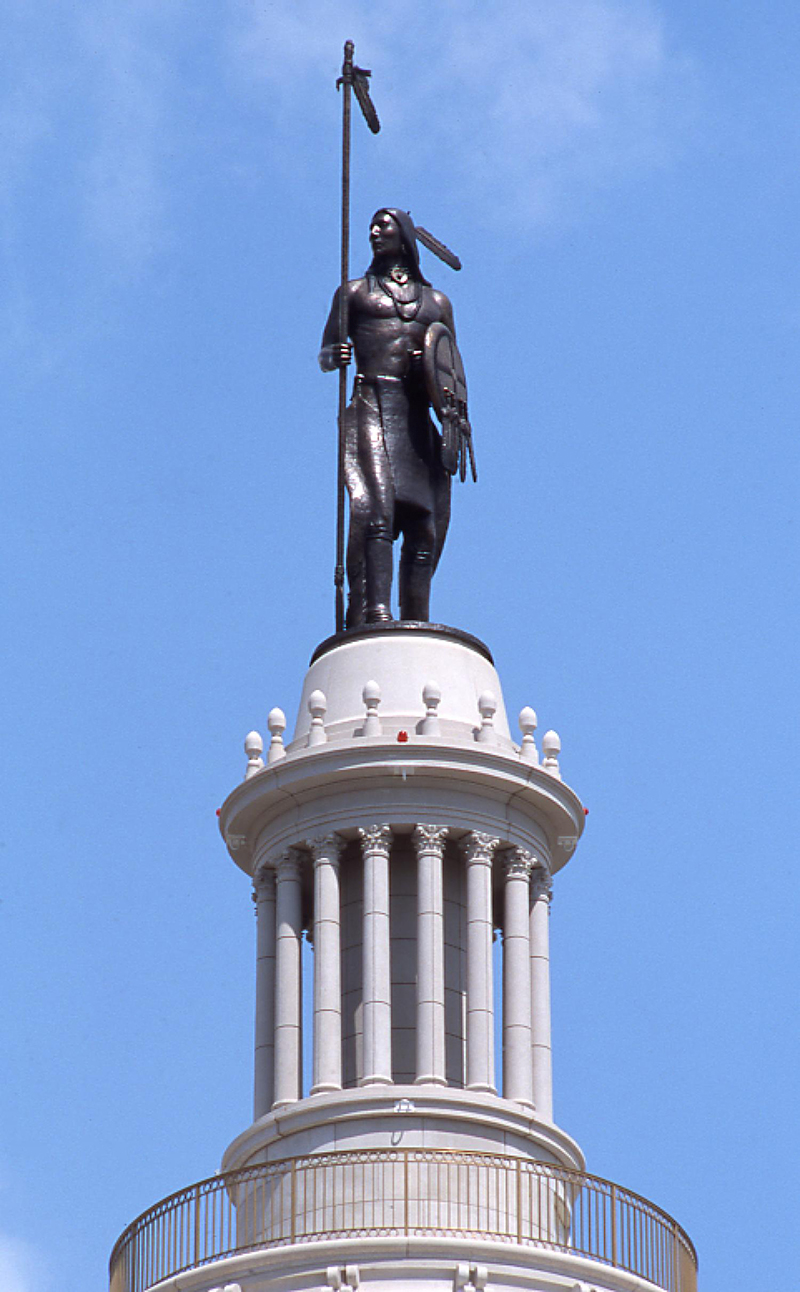
GUARDIAN, THE.
In June 2002 a monumental sculpture was placed atop the Oklahoma Capitol, capping a new dome finished earlier in the year and ending an eighty-year process of completing the building. The additions placed the height of the Capitol at more than five feet greater than that of the U.S. Capitol. Oklahoma's became the first state capitol to be topped by an American Indian figure. The work was selected in 2000 from a field of entries in a "blind" competition (in which the artists' identities were unknown to the judges) supervised by the State Capitol Preservation Commission, the Oklahoma Arts Council, and the Oklahoma Centennial Commission.
The Guardian is a three-ton, seventeen-and-one-half-foot-tall bronze representation of an American Indian man. The image is a composite of material and spiritual cultural characteristics of Oklahoma's thirty-nine tribes. Rife with Native symbolism, the dignified, muscular figure carries a spear, attached to his waist by a strap and staked in the earth, to symbolize his commitment to stand his ground in a fight. He carries a circular shield, representing the circle of life; inside the circle is a cross, which, along with four feathers that dangle from the shield, represent the four seasons and directions. The figure wears an undecorated, generic breechcloth, leggings, and moccasins. Around his neck are a beaded choker and two strings of beads. His body is turned to the east, toward the rising sun, but his head is turned to the south. The figure was cast at The Crucible foundry in Norman, Oklahoma.
The Guardian is the creation of American Indian (Seminole-Creek) painter and sculptor Enoch Kelly Haney. Born in Turkey Creek, near Seminole, Oklahoma, on November 12, 1940, Haney graduated from Bacone College and the University of Arizona. After being a Methodist pastor and youth ministry director, he served in the Oklahoma House of Representatives and Senate from 1981 to 1986 and from 1987, respectively. He also served as a councilman of the Seminole Nation.
The installation ceremony on June 8, 2002, drew four thousand Oklahomans and included traditional Indian blessings by Cheyenne-Arapaho Peace Chief Gordon Yellowman, Sr., and Cheyenne Peace Chief Lawrence Hart. Drumming for traditional dances was provided by the Kiowa family of Leonard Cozad, Sr. Other monumental outdoor sculptures at the Capitol include Tribute to Range Riders, by Constance Whitney Warren, installed in 1930, and As Long As the Waters Flow, by Oklahoma-born Chiricahua Apache artist Allan Houser (Haozous), installed in 1989.






